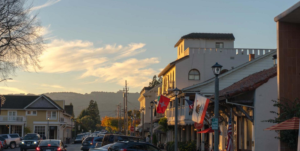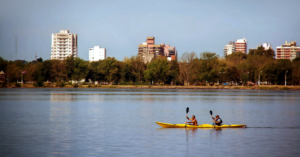By reestablishing damaged or previously built landscapes with locally adapted vegetation, including native species, these actions aim to decrease the demand of potable water for landscape irrigation. It is intended to help with erosion management and storm water pollution prevention both during and after construction. It also aims to prevent the growth of invasive alien plants, which has a propensity to overwhelm ecosystems and decrease the diversity of flora and animals.
CALGreen Code Section A5.304.6: Restoration of areas disturbed by construction.
Restore all landscape areas disturbed during construction by planting with local adaptive and/or noninvasive vegetation.
CALGreen Code Section A5.304.7: Previously developed sites.
On previously developed or graded sites restore or protect at least 50 percent of the site area with adaptive and/or noninvasive vegetation. Projects complying with Section A5.106.3, Item 3, may apply vegetated roof surface to this calculation if the roof plants meet the definition of adaptive and noninvasive.
Exception: Area of the building footprint is excluded from the calculation.
Intent:
The intent of these measures is to reduce the use of potable water for landscape irrigation through restoring disturbed or previously developed sites with locally adaptive, including native, vegetation. It is meant to assist with control of erosion and storm water pollution during and after construction. It also seeks to reduce the possibility of the spread of invasive exotic vegetation that has a tendency to overrun ecosystems, reducing diversity of flora and fauna. California Code of Regulations, Title 3, contains Department of Food and Agriculture regulations for invasive plants. Various laws in California’s Fish and Game, Food and Agriculture, Harbors and Navigation, and Public Resources Codes address invasive plant and animal species, such as control of species carried in ships’ ballast water and of stands of tamarisk, a highly invasive plant species. Section 5.106.1 of the code, and state and local regulations, address storm water pollution prevention. This voluntary provision can assist with loss of soil due to erosion for the purposes of keeping receiving waters clean.
Compliance Method:
Site plans or landscape plans may be used to show where plants are intended to be installed. The 50-percent area calculations for previously developed sites can be shown on the site plan and, if applicable, on the building roof plan. Any areas that are disturbed by accessing the building project, installing utilities, or stockpiling of earth for fill, for example, can be remediated using this provision.
Judicious siting of temporary facilities for the contractor’s field office, utilities, sanitary facilities and public access to the project site, to disturb as little as possible of the area can assist in compliance with this provision. Restoring these areas with the recommended vegetation should be shown on site or landscaping plans.
Enforcement:
Plan intake: The plan reviewer should confirm in the construction documents the landscape materials listing. In the case of previously developed sites, they should check the calculations for 50-percent coverage with recommended plantings.
On-site enforcement: The inspector should verify that plants are installed in the locations as shown, checking to make sure that disturbed or previously developed or graded areas are planted.
(Excerpted from ‘Guide to the 2022 California Green Building Standards Code Nonresidential’ – Appendix A5)




